Dolphin 1932 drydocking: Difference between revisions
Pbcjohnston (talk | contribs) (Finished photos) |
Pbcjohnston (talk | contribs) mNo edit summary |
||
| (One intermediate revision by the same user not shown) | |||
| Line 1: | Line 1: | ||
[[File:Header 169.jpg]] | [[File:Header 169.jpg]] | ||
=== <big>Notes</big> === | |||
<div style="text-align: justify;"><span style="color:#00008B">Dolphin was completed by Portsmouth and commissioned into the U.S. Navy on July 1, 1932. She immediately departed on a shakedown cruise in the Atlantic, intended to fully test all her capabilities under operational conditions. Any deficiencies would be corrected in a subsequent yard period, as shown below.</span> | |||
[[File:Red bar sub new.jpg]] | |||
[[File:Dolphin-ext-011.jpg|left|500px]] | [[File:Dolphin-ext-011.jpg|left|500px]] | ||
<div style="text-align: justify;"><span style="color:#00008B"> | <div style="text-align: justify;"><span style="color:#00008B">The Dolphin sits in drydock at the Portsmouth Navy Yard in Kittery, ME on September 30, 1932, after her initial shakedown cruise in summer of 1932. The purpose of this Post-Shakedown Availability (PSA) is to correct any issues or deficiencies identified during the shakedown cruise. Her four bow torpedo tubes can be clearly seen and the bow diving planes are rigged out as if she was submerged. The purpose of the bumpers on each tube outer door will become apparent in the photos below. | ||
<small>US Navy Photo Contributed by Roger Torgeson</small> | <small>US Navy Photo Contributed by Roger Torgeson</small> | ||
| Line 88: | Line 94: | ||
<small>US Navy Photo Contributed by Roger Torgeson</small> | <small>US Navy Photo Contributed by Roger Torgeson</small> | ||
[[File:Red bar sub new.jpg]] | |||
<center>[[Dolphin|Return to Dolphin main page]] | [[V-class|Return to V-class main page]]</center> | |||
[[File:Red bar sub new.jpg]] | [[File:Red bar sub new.jpg]] | ||
<center> | <center> | ||
Latest revision as of 16:35, 21 June 2023
Notes
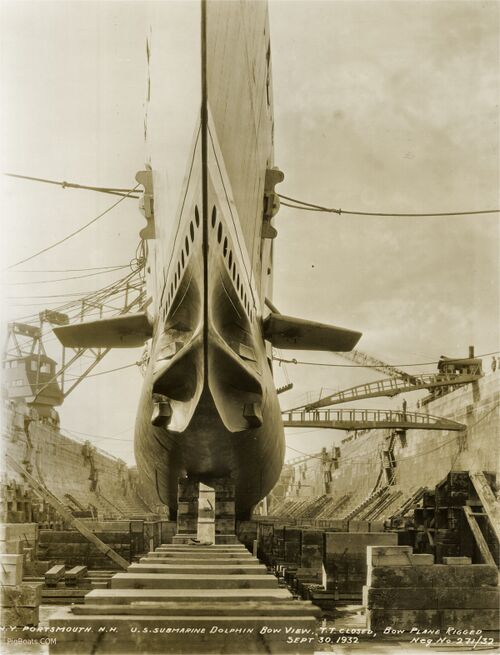
US Navy Photo Contributed by Roger Torgeson
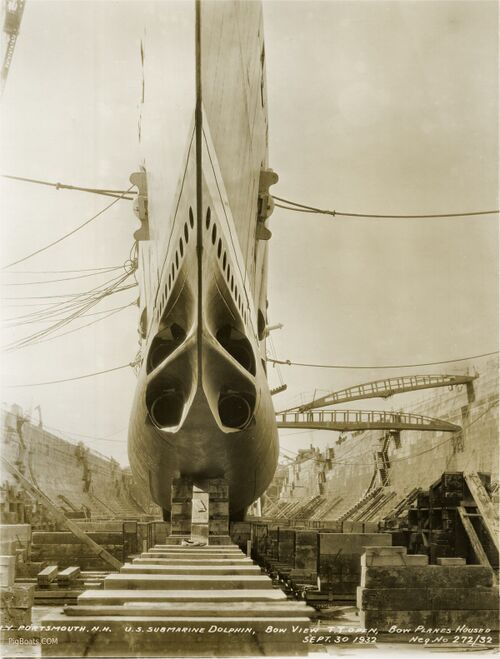
US Navy Photo Contributed by Roger Torgeson
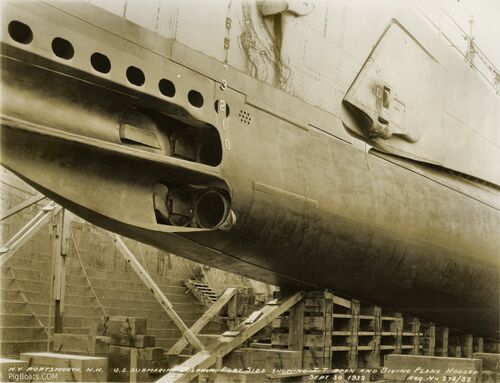
The second piece is a hydrodynamic fairing attached via a hinge to the outer door. When shut this fairing provides a smooth flow of water. When open it partially retracts into the superstructure to get out of the way of the weapon as it exits. The bumper on the fairing prevents the weapon from hanging up on or hitting the superstructure. As you can see there is also a bumper on the inside of the circular outer door for the same purpose.
The mechanism for opening and closing these tube fairings was fairly complicated and would have most likely caused the boat some maintenance problems.
The oval cutouts above the tubes are called limber holes and they allow rapid flooding and/or draining of this portion of the superstructure, which is open to the sea. The pressure hull is buried inside the outer hull to the right of this picture and can not be seen.
The numbers running vertically above the tubes are draft marks, used to tell the crew how deep in the water the boat is sitting while in port. Each number is 6 inches tall and there are 6 inches from the bottom of one number to the top of the next. The bottom "0" actually corresponds to 10 feet, meaning that when the water line is at the bottom of the 0 the hull directly below this number is 10 feet under the water. The "1" corresponds to 11 feet, and so on.
US Navy Photo Contributed by Roger Torgeson
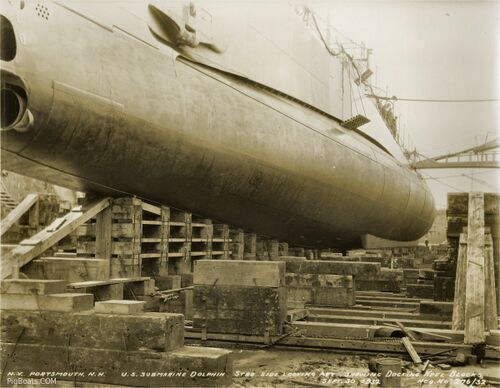
US Navy Photo Contributed by Roger Torgeson

US Navy Photo Contributed by Roger Torgeson

US Navy Photo Contributed by Roger Torgeson
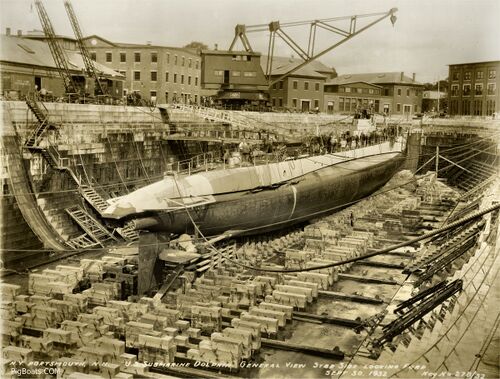
The stern diving planes are mounted to the rudder stock and are aft of the propellers (properly called a screw). The stern planes are used to control the angle of the boat while submerged.
On the main deck the aft escape trunk can be seen, and just forward of that are two raised platforms that cover the large mufflers for the main propulsion diesel engines. Just below the muffler platform is a circular opening in the side of the superstructure. This is the exhaust pipe leading out from the muffler. Further forward you can just see the exhaust pipe outlet for the starboard side generator diesel.
US Navy Photo Contributed by Roger Torgeson
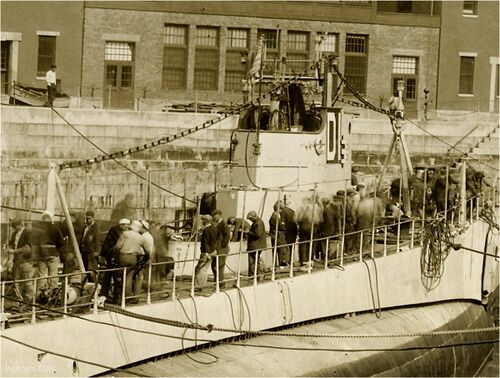
US Navy Photo Contributed by Roger Torgeson
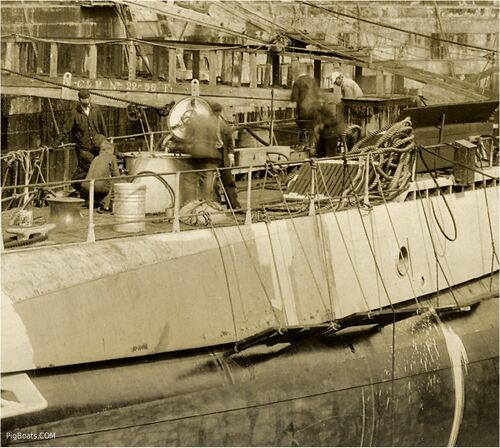
US Navy Photo Contributed by Roger Torgeson
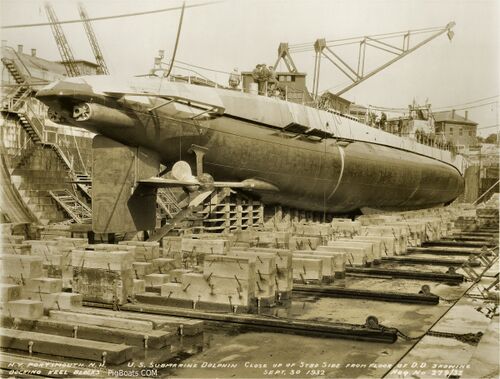
US Navy Photo Contributed by Roger Torgeson
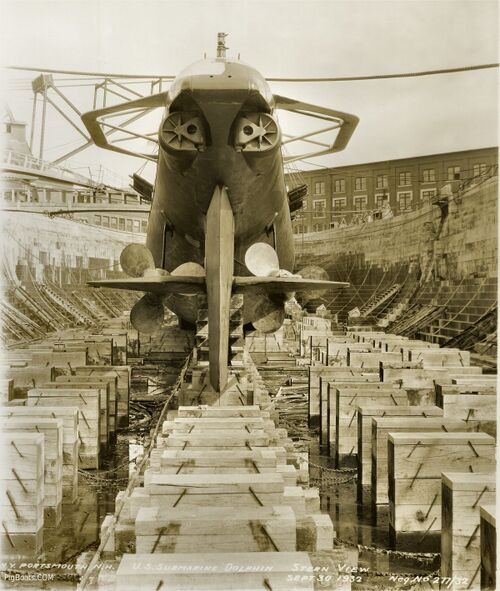
US Navy Photo Contributed by Roger Torgeson
Page created by:
Ric Hedman & David Johnston
1999 - 2023 - PigBoats.COM©
Mountlake Terrace, WA, Norfolk, VA
webmaster at pigboats dot com
